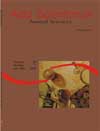Fiber sources in diet performance of Nile tilapia fingerlings (<em>Oreochromis niloticus</em>)
Abstract
Fiber sources, namely, sugar cane bagasse (CB), hydrolyzed sugar cane bagasse (HB), corn cob (CC) and rice hulls (RH), were evaluated for their performance in diets of the Nile tilapia (Oreochromis niloticus) fingerling. Experiment lasted 37 days and was done at the Aquaculture Lab of the State University of Maringá, Maringá PR Brazil. 240 fingerlings, mean initial weight 0,600,01g, were employed. Distributed in completely randomized blocks design, the fish underwent four treatments and six replications. Each experimental unit consisted of 160 L pens. Mean final weight of Nile tilapia fingerlings fed on CC diet was higher than those fed on CB (p < 0.05). HB and RH, however, showed no difference from results with other diets. In final length CC was better (p < 0.05) than CB and RH and there was no difference in HB when compared to other treatments. Concerning weight gain ratio, CC and HB were alike and both were better than RH and CB. With regard to Nile tilapia fingerling performance CC and HB have better fiber sources than CB and RH.Downloads
Download data is not yet available.
Published
2008-05-13
How to Cite
Hayashi, C., Meurer, F., Boscolo, W. R., & Soares, C. M. (2008). Fiber sources in diet performance of Nile tilapia fingerlings (<em>Oreochromis niloticus</em>). Acta Scientiarum. Animal Sciences, 22, 689-694. https://doi.org/10.4025/actascianimsci.v22i0.2920
Issue
Section
Animal Science
DECLARATION OF ORIGINALITY AND COPYRIGHTS
- I Declare that current article is original and has not been submitted for publication, in part or in whole, to any other national or international journal.
The copyrights belong exclusively to the authors. Published content is licensed under Creative Commons Attribution 4.0 (CC BY 4.0) guidelines, which allows sharing (copy and distribution of the material in any medium or format) and adaptation (remix, transform, and build upon the material) for any purpose, even commercially, under the terms of attribution.
Read this link for further information on how to use CC BY 4.0 properly.
0.9
2019CiteScore
29th percentile
Powered by 








































